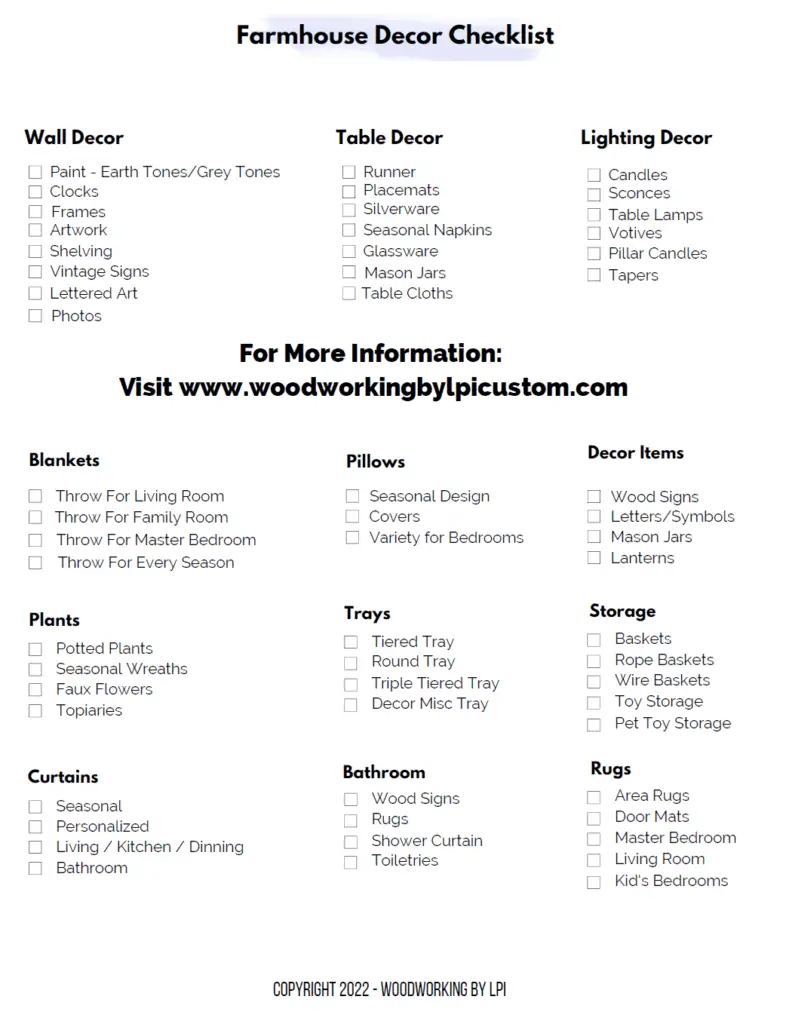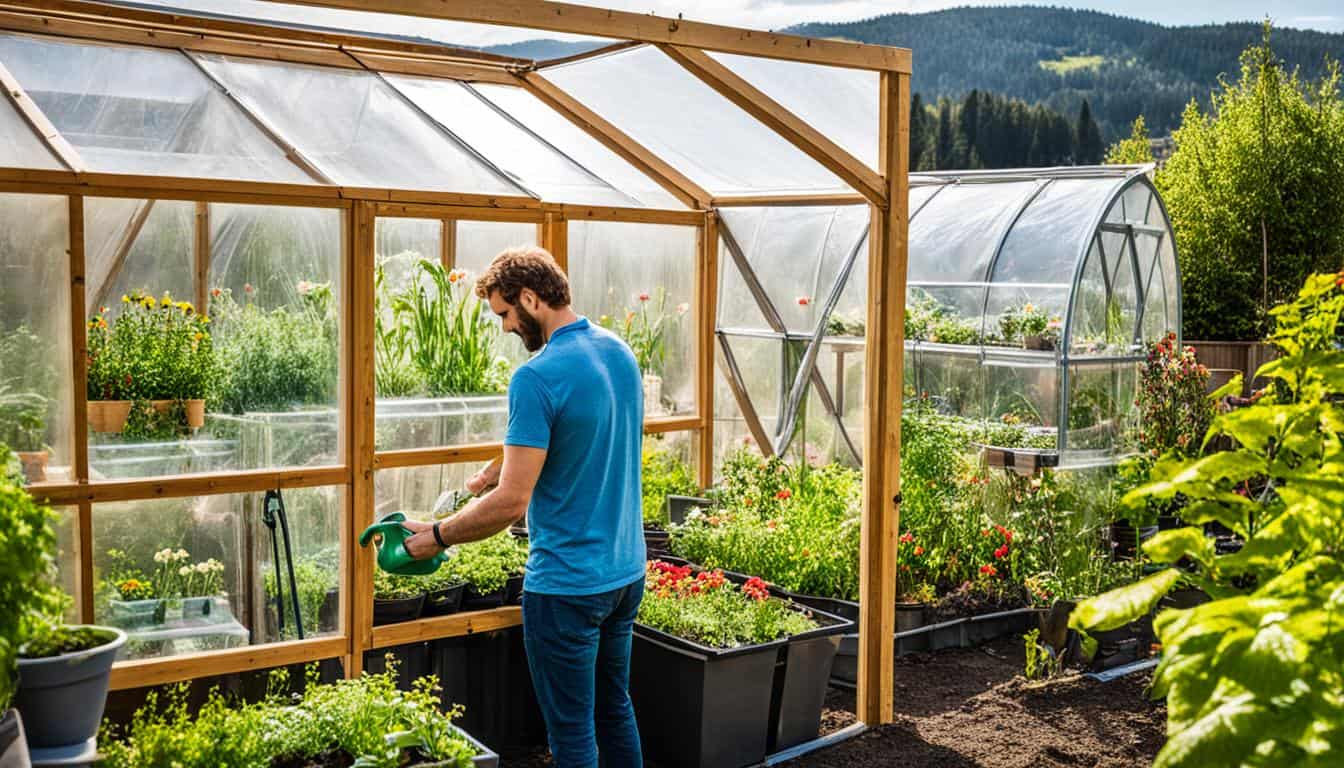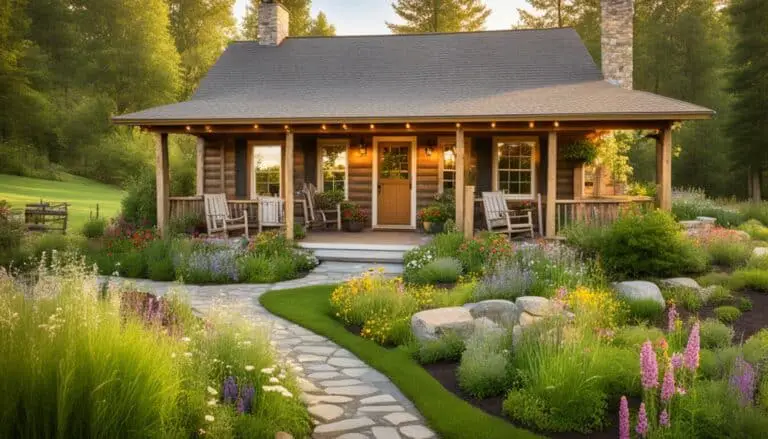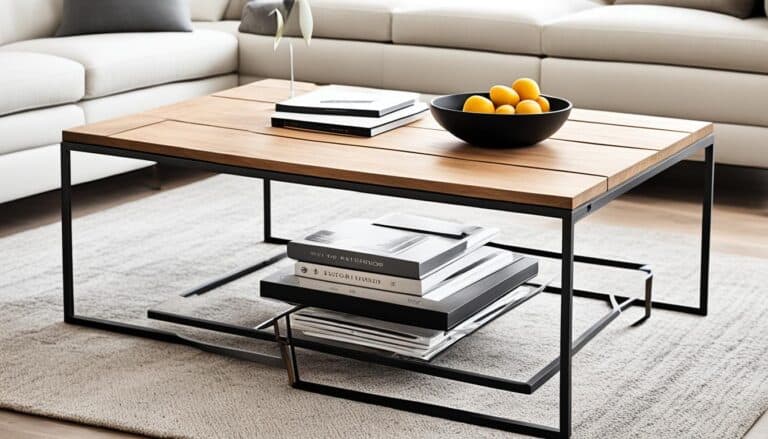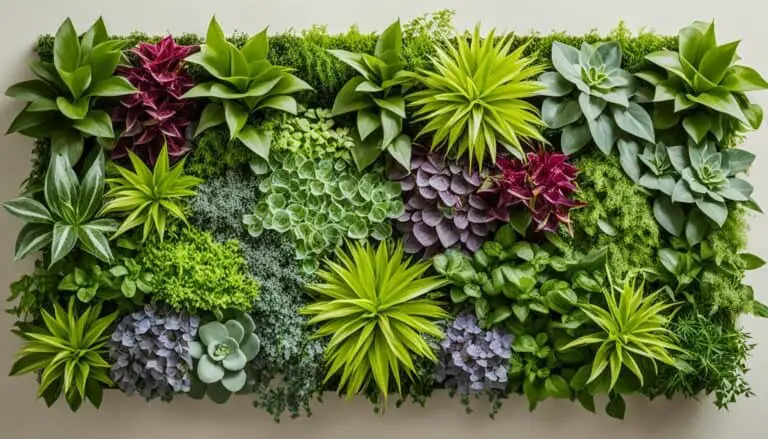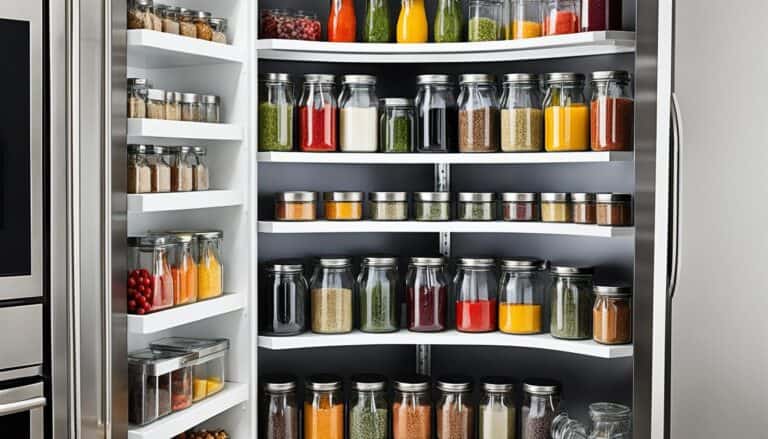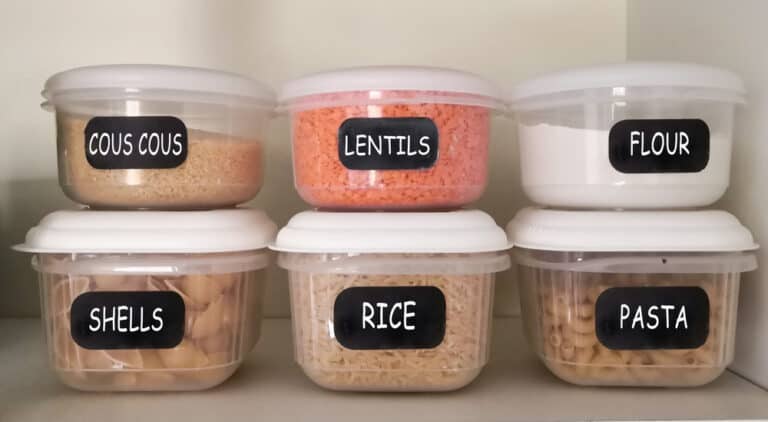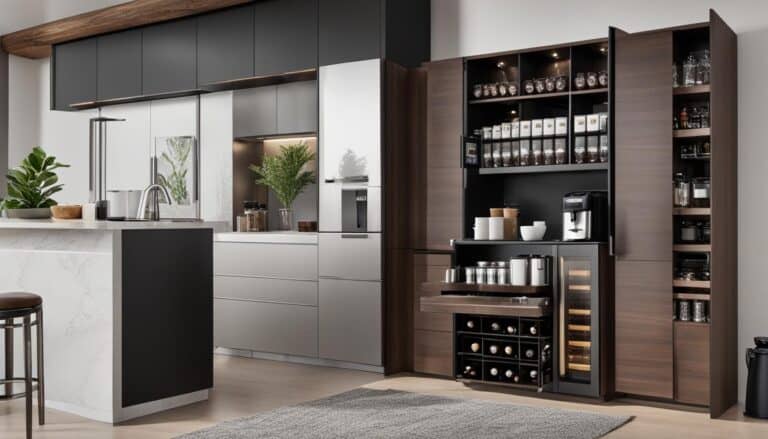Are you tired of limitations on your gardening due to seasonal changes? Have you ever wondered if there’s a way to grow fresh produce all year round, even in the harshest climates?
Introducing the solution: a DIY greenhouse. But wait, you might be thinking, isn’t building a greenhouse a complicated and expensive endeavor? Not anymore. With our step-by-step guide and expert tips, you can easily build your own greenhouse without breaking the bank.
Imagine the joy of stepping into a lush oasis of greenery, where plants thrive and flourish regardless of the weather outside. A homemade greenhouse not only protects your plants from harsh elements but also extends your growing season, allowing you to enjoy fresh, homegrown produce throughout the year. From greenhouse design to materials and construction, we’ve got you covered.
In this article, we’ll explore everything you need to know about building your own DIY greenhouse. Discover the benefits of having a greenhouse, weigh the pros and cons of DIY versus a greenhouse kit, and learn about the key considerations for location, foundation, frame, and covering. Plus, we’ll provide you with valuable tips and customization ideas to make your greenhouse truly unique.
Ready to embark on this exciting gardening journey? Let’s dive in and unlock the secrets to building your own DIY greenhouse!
Key Takeaways:
- Building a DIY greenhouse offers year-round gardening opportunities and fresh produce regardless of the season.
- A homemade greenhouse can be cost-effective and customized to suit your specific needs.
- Consider the advantages and disadvantages of DIY greenhouse construction versus purchasing a greenhouse kit.
- Choosing the right location, foundation, frame, and covering are crucial for a successful greenhouse project.
- Customize your greenhouse with ventilation, shelving, and other accessories to optimize your gardening experience.
Why Build a Greenhouse?
DIY vs. Kit: Pros and Cons
When considering building a greenhouse, it is essential to weigh the pros and cons of building it yourself versus purchasing a greenhouse kit. Building a DIY greenhouse allows for complete customization, giving you the flexibility to design the structure according to your specific requirements. It also provides an opportunity for cost savings, especially if you can source materials at a lower cost. On the other hand, greenhouse kits offer convenience and simplicity, as they come with pre-cut materials and detailed instructions. They can be a suitable option for individuals who prefer a quicker and more straightforward setup process. Greenhouse kits also offer a variety of design options to choose from, ensuring you find the right style for your needs.
Let’s take a closer look at the pros and cons of DIY greenhouses and greenhouse kits:
| DIY Greenhouse | Greenhouse Kit |
|---|---|
|
|
|
Building a DIY greenhouse allows you to fully customize every aspect of the structure. You have the freedom to choose the size, layout, and materials that best suit your needs and gardening preferences. Whether you envision a small greenhouse for starting seedlings or a larger structure for year-round cultivation, a DIY greenhouse gives you the opportunity to bring your unique vision to life. Moreover, with a DIY greenhouse, you have the flexibility to design the structure according to your specific requirements. You can incorporate features such as built-in shelves, customized ventilation systems, and unique architectural elements that enhance both functionality and aesthetics. Cost savings are another significant advantage of building a DIY greenhouse. By sourcing materials yourself or repurposing existing materials, you can often reduce the overall cost of constructing your greenhouse. This can be particularly beneficial if you are on a tight budget or enjoy the challenge of finding affordable solutions for your gardening projects. |
If convenience and simplicity are your top priorities, a greenhouse kit may be the ideal choice. Greenhouse kits come with pre-cut materials, saving you time and effort in measuring and cutting the components yourself. This can be especially helpful for individuals who have limited carpentry skills or prefer a straightforward setup process. In addition to pre-cut materials, greenhouse kits also provide detailed instructions that guide you through the construction process. These step-by-step instructions help ensure that you assemble your greenhouse correctly and efficiently. One of the advantages of greenhouse kits is the variety of design options available. Whether you prefer a traditional or modern style, there are greenhouse kits to suit every taste. From compact lean-to structures to spacious walk-in models, greenhouse kits offer a range of sizes and shapes to meet your specific needs. This allows you to find a greenhouse kit that not only fits your space but also complements your garden aesthetics. |
When deciding between a DIY greenhouse and a greenhouse kit, consider your gardening goals, budget, skill level, and time availability. Both options have their advantages and drawbacks, so it’s important to choose the option that aligns best with your needs and preferences. Whether you choose to embark on a DIY greenhouse project or opt for the convenience of a greenhouse kit, a greenhouse can provide you with a wonderful space to nurture your plants and enjoy gardening year-round.
Selecting a Location
The success of your greenhouse depends heavily on choosing the right location. Consider the following factors when selecting a spot for your greenhouse:
- Greenhouse Location: Find a suitable area in your yard to set up your greenhouse. Look for a spot that is easily accessible and has enough space to accommodate the size of your greenhouse.
- Sun Exposure: Place your greenhouse where it can receive ample sunlight throughout the day. This will provide the necessary energy for your plants to grow. Ideally, the greenhouse should face south to maximize sun exposure.
- Drainage: Good drainage is essential for preventing water buildup around your greenhouse. Choose a location where water can easily drain away from the structure. Avoid areas prone to flooding or low-lying spots where water tends to collect.
- Proximity to Utilities: Consider the proximity to utilities such as electricity and water. Having these resources nearby will make it more convenient to maintain your greenhouse and provide essential resources for your plants. Ensure proper electrical connections and plumbing are easily accessible near the location.
By carefully considering these factors, you can select a location that provides optimal conditions for your greenhouse, promoting healthy plant growth and ease of maintenance.
| Factors to Consider | Suggested Location |
|---|---|
| Sun Exposure | South-facing area with maximum sunlight exposure |
| Drainage | Area with good natural drainage or install proper drainage system |
| Proximity to Utilities | Accessible to electricity and water sources |
Foundation Options
A solid foundation is crucial for the stability and longevity of your greenhouse. Depending on the stability of your ground, you may need to decide on a foundation type. For areas with a cold climate, it is recommended to build the foundation below the frost line and insulate it if necessary. Common material choices for greenhouse foundations include ground contact-rated wood and poured concrete. Wood is often preferred for its durability and aesthetic appeal, while concrete provides excellent stability. Consider the specific needs of your greenhouse and consult local regulations before deciding on the foundation type.
Comparison of Greenhouse Foundation Materials
| Foundation Material | Pros | Cons |
|---|---|---|
| Ground contact-rated wood | – Durable and aesthetically pleasing\n- Easy to work with | – Susceptible to rot and insect damage over time\n- Requires regular maintenance and treatment |
| Poured concrete | – Provides excellent stability\n- Durable and long-lasting | – More costly compared to wood\n- Requires professional expertise for proper installation |
When choosing a foundation material, consider factors such as stability, cost, and resistance to environmental conditions. Wood is often favored for its natural beauty, while concrete offers superior stability. The decision ultimately depends on your budget, climate, and personal preferences.
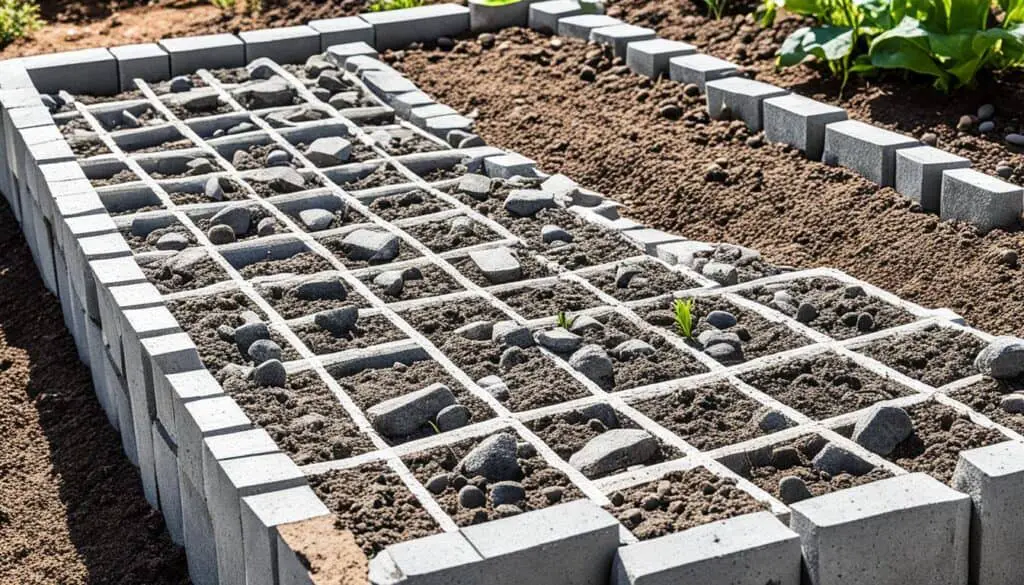
Frame Options
The frame of your greenhouse provides the structural support and stability for the entire structure. When choosing a frame for your greenhouse, it’s important to consider factors such as strength, durability, and suitability for your specific needs.
Here are some frame options to consider:
- Lumber: Wood, such as cedar, is a popular choice for greenhouse frames due to its natural beauty, rot resistance, and strength. It provides a sturdy and reliable frame that is aesthetically pleasing.
- PVC: PVC (polyvinyl chloride) pipes are lightweight, affordable, and easy to work with, making them a suitable option for smaller backyard greenhouses. They can be easily cut and assembled to create the desired frame shape.
- Aluminum: Aluminum frames are known for their durability, rust resistance, and lightweight nature. They are often used for glass or polycarbonate panels, providing a sleek and modern look.
- Galvanized Steel: Galvanized steel frames are commonly used by commercial growers due to their strength and ability to withstand heavy winds and snow loads. However, they may not be the ideal choice for backyard greenhouses, as they can potentially rust over time.
Consider your budget, greenhouse size, climate conditions, and aesthetic preferences when selecting the frame material for your greenhouse. Each option has its own advantages, so choose the one that best suits your needs.
Choosing a Greenhouse Covering
The covering of your greenhouse is a crucial element that directly impacts the success of your gardening endeavors. It not only protects your plants from the elements but also plays a vital role in maintaining a conducive environment for their growth. When selecting a greenhouse covering, there are several options to consider, each with its own advantages and considerations.
Glass Panels
Glass panels are a classic choice for greenhouse coverings due to their durability, aesthetic appeal, and exceptional light transmission. They allow ample sunlight to reach your plants, facilitating optimal photosynthesis and growth. Safety should be a priority when using glass panels, so it is recommended to opt for tempered or safety glass to minimize the risk of breakage. While glass provides excellent longevity, it may require occasional cleaning to maintain optimal light transmission.
Polycarbonate Sheets
Polycarbonate sheets have gained popularity as an alternative to glass. They are lightweight, durable, and offer good insulation properties to regulate temperature within the greenhouse. UV-resistant polycarbonate sheets are commonly used to prevent yellowing or cloudiness over time, ensuring long-lasting clarity and light transmission. These sheets are available in different thicknesses, providing options for varying insulation needs.
Plastic Sheeting
Plastic sheeting, particularly polyethylene, is a lightweight and cost-effective option for greenhouse coverings. It is easy to install and replace, making it a popular choice for temporary or low-budget greenhouse projects. However, it is important to note that plastic sheeting may require more frequent replacement compared to other materials, and it may reduce light transmission. Regular inspection and maintenance are necessary to ensure adequate protection and optimal growing conditions for your plants.
When selecting a greenhouse covering, consider factors such as durability, insulation, light transmission, and your specific gardening needs. Each option has its own benefits and considerations, so choose the covering material that best suits your requirements and complements the overall design of your DIY greenhouse.
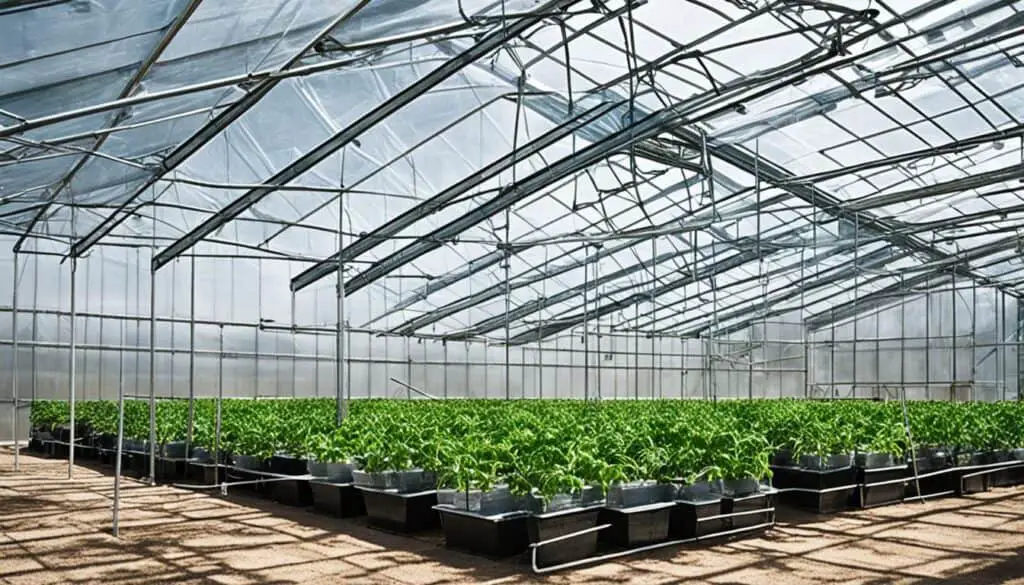
| Covering Material | Advantages | Considerations |
|---|---|---|
| Glass Panels | Durable, aesthetic, excellent light transmission | Higher cost, potential breakage, cleaning requirements |
| Polycarbonate Sheets | Lightweight, durable, good insulation | Varying insulation with different thicknesses |
| Plastic Sheeting | Lightweight, cost-effective, easy to install | Reduced light transmission, may require frequent replacement |
Building a Glass Greenhouse
Glass greenhouses are a popular choice for their aesthetic appeal and excellent light transmission. When constructing a glass greenhouse, it is essential to have a building plan that outlines the construction process and the materials required. With safety being a top priority, make sure to wear appropriate protective gear when working with glass. The construction typically involves building wall frames on the ground or a flat surface and then raising them into place. To ensure the safety of the structure and its occupants, it is crucial to use tempered or safety glass. After completing the frame, follow proper instructions to install the glass panels securely.
Table:
| Materials | Description |
|---|---|
| Tempered or Safety Glass | Durable and shatter-resistant glass that ensures safety in case of breakage. |
| Building Plan | Detailed instructions and diagrams that guide the construction process. |
| Protective Gear | Equipment such as goggles and gloves to safeguard against injury. |
| Wall Frames | Structural components that form the walls of the greenhouse. |
| Installation Instructions | Step-by-step guidance for securely placing and fastening the glass panels. |
Image:
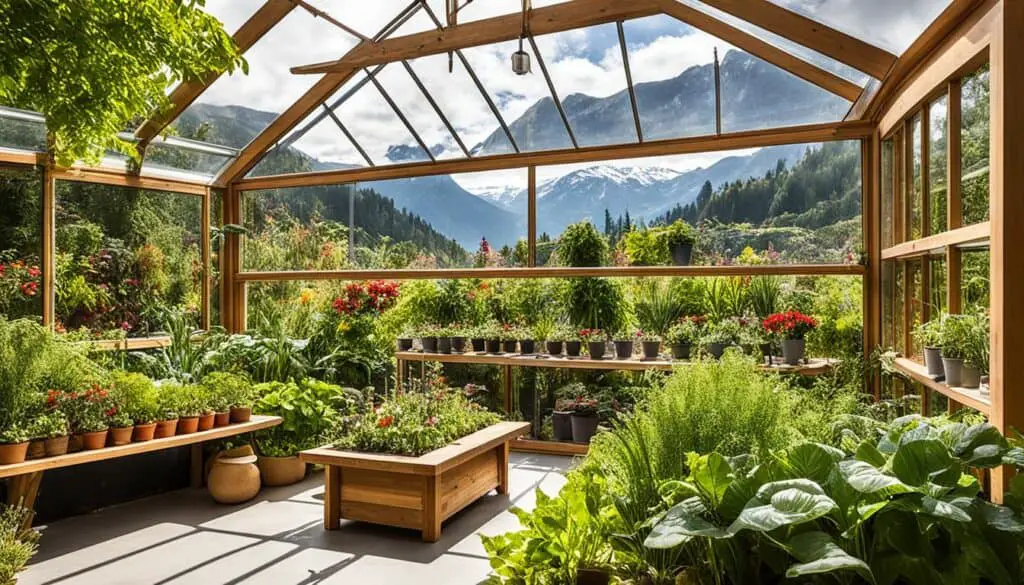
Building a Wood Greenhouse
A wood greenhouse offers natural beauty, excellent insulation, and durability when built with the right materials and design. When constructing a wood greenhouse, choose a rot-resistant timber such as cedar and ensure the wood is treated for outdoor use. Design your greenhouse to complement your home’s style and meet your gardening needs. Structural components can be cut with a miter saw and joined with screws or nails. Use ground contact-rated wood for the foundation to protect against moisture damage. Follow proper construction techniques and take necessary precautions to ensure the strength and longevity of your wood greenhouse.
When it comes to building a wood greenhouse, it’s important to select the right type of lumber. Opting for a rot-resistant and outdoor-treated timber, such as cedar, will ensure that your greenhouse withstands the elements and remains in good condition for years to come. Cedar not only offers natural beauty but also possesses excellent rot resistance, making it an ideal choice for a wood greenhouse.
The design of your wood greenhouse is another crucial aspect to consider. Take into account your home’s architectural style and your gardening needs when planning the layout and size of your greenhouse. Whether you prefer a simple and traditional design or a more elaborate one, the choice is yours to make. Remember to include features such as windows or vents for proper ventilation and climate control.
When it comes to the construction of your wood greenhouse, it’s essential to use the right tools and techniques. Cutting the structural components, such as the frame and supports, with a miter saw will ensure precise and accurate measurements. Joining the wood pieces together using screws or nails will provide stability and strength to the structure. Following proper construction techniques and taking necessary precautions, such as wearing appropriate safety gear, will ensure a successful and safe building process.
The foundation of your wood greenhouse is crucial for its stability and longevity. By using ground contact-rated wood for the foundation, you can protect your greenhouse from moisture damage and ensure its resistance against rot. Properly preparing the foundation and ensuring a level base will contribute to the overall structural integrity of your wood greenhouse.
Overall, building a wood greenhouse requires careful planning, the right materials, and proper construction techniques. With attention to detail and a focus on quality, you can create a beautiful and functional wood greenhouse that enhances your gardening experience and brings natural beauty to your backyard.
Building a PVC Greenhouse
When it comes to building a greenhouse, PVC pipe offers a lightweight and affordable option that is perfect for small-scale gardening projects. With its versatility and ease of use, PVC greenhouse construction is accessible to both beginners and experienced DIY enthusiasts.
To get started, you’ll need to cut the PVC pipes to the desired size using a PVC cutter or a hacksaw. Make sure to measure and mark the pipes accurately to ensure a proper fit during assembly.
Once the pipes are cut, you can assemble them using PVC glue for a secure and stable bond. Apply the glue to the ends of the pipes and connect them together, following the design plan or layout you have in mind.
If you plan to move your PVC greenhouse in the future, consider using temporary connectors such as bolts or screws instead of glue. This will allow you to disassemble and reassemble the greenhouse easily.
PVC fittings like elbows, tees, and wyes allow for various angles and shapes in the greenhouse design, giving you the flexibility to create a structure that meets your specific gardening needs.
Tips for PVC Greenhouse Assembly:
- Double-check your measurements before cutting the PVC pipes to ensure accurate assembly.
- Apply the PVC glue evenly and firmly press the pipes together to create a strong bond.
- Use PVC fittings strategically to create angles, bends, or connections as needed.
- Consider reinforcing the structure with additional supports, such as wooden or metal stakes. This will add stability to your PVC greenhouse.
After constructing the PVC frame, it’s time to cover it with lightweight plastic sheeting. This will help create a greenhouse environment that protects your plants from the elements and provides the necessary insulation.
Secure the plastic sheeting to the frame using clips or staples, making sure to eliminate any gaps that could allow drafts or pests to enter the greenhouse.
A PVC greenhouse is relatively easy to assemble and provides a cost-effective solution for those looking to start their own garden or extend their growing season. Whether you’re a beginner or an experienced gardener, a PVC greenhouse offers a versatile and affordable option for your gardening needs.
DIY Greenhouse Ideas
Building a DIY greenhouse offers endless possibilities for creativity and customization. One popular idea is repurposing old or recycled windows to create a unique and eco-friendly greenhouse. By arranging the windows in a barn-style design or another creative configuration, you can create a visually appealing structure.
Another DIY option is building a mini greenhouse, which is perfect for starting seedlings or for small-scale gardening. Mini greenhouses are compact and can be easily placed on a patio or balcony. They are a great solution for gardeners with limited space.
To inspire your DIY greenhouse project, here are some ideas:
- Recycled Windows Greenhouse: Gather old windows from salvage yards, flea markets, or renovations, and use them to construct the walls and roof of your greenhouse. This sustainable approach not only adds character to your garden but also reduces waste.
- Barn-Style Greenhouse: Create a charming barn-style greenhouse by using reclaimed wood and adding rustic design elements. This type of greenhouse not only provides functionality but also becomes a focal point in your garden.
- Mini Greenhouse Shelving: Incorporate shelving into your mini greenhouse design to maximize vertical space and create separate growing areas. This allows you to grow a variety of plants while making the most of your limited space.
Remember to consider your specific needs and the materials you have available when exploring DIY greenhouse ideas. Get creative, have fun, and enjoy the process of building your own unique greenhouse.
| Idea | Description |
|---|---|
| Recycled Windows Greenhouse | Repurpose old windows to construct a sustainable and visually appealing greenhouse. |
| Barn-Style Greenhouse | Use reclaimed wood and rustic design elements to create a charming barn-style greenhouse. |
| Mini Greenhouse Shelving | Incorporate shelving into your mini greenhouse design to maximize vertical space and create separate growing areas. |
Customize Your DIY Greenhouse
Customizing your DIY greenhouse allows you to enhance its functionality and make it more enjoyable to use. By adding personalized touches, you can create a greenhouse that caters specifically to your gardening needs. Here are some customization ideas to consider:
- Ventilation: Proper ventilation is essential for maintaining the optimal environment inside your greenhouse. Consider incorporating ventilation options such as:
| Ventilation Options | Description |
|---|---|
| Roof vents | Allow hot air to escape and fresh air to enter the greenhouse. |
| Windows | Provide additional airflow and natural light. |
| Fans | Circulate air and regulate temperature and humidity levels. |
- Shelving and Storage: To maximize space and keep your greenhouse organized, consider installing shelves, benches, or tables. These provide ample surfaces for your plants, gardening tools, and supplies.
- Accessories: Add hooks and hangers for hanging tools and equipment, ensuring they are easily accessible when you need them. You can also incorporate a small workstation or potting table for convenient planting and potting tasks.
- Humidity Control: Depending on your location or plant preferences, humidity control may be necessary. Consider integrating a dehumidifier to maintain optimal moisture levels for your plants.
By customizing your greenhouse, you can create a space that is efficient, organized, and optimized for your plants’ growth. Tailor it to your gardening preferences and needs, and enjoy the benefits of a personalized greenhouse.
Harriet’s Customized Greenhouse
“I customized my DIY greenhouse to suit my gardening style and preferences. I added roof vents and windows to promote proper airflow and temperature control. With the help of sturdy, adjustable shelving, I can organize my potted plants and gardening tools efficiently. The hooks and hangers on the walls allow easy access to my handheld tools, keeping them within reach. To address humidity concerns, I installed a dehumidifier to maintain the perfect growing conditions. Overall, customizing my greenhouse has made my gardening experience more enjoyable and successful!”
– Harriet, Home Gardener
Conclusion
Building a DIY greenhouse offers numerous benefits for avid gardeners like you. One of the key advantages is the extended growing season it provides, allowing you to enjoy fresh food year-round. By constructing your own greenhouse, you also have the opportunity to customize it to suit your specific needs and preferences, from its size and layout to the materials used.
Moreover, a DIY greenhouse promotes sustainability by reducing the need for pesticides and providing a controlled environment for your plants to thrive. With careful consideration of factors such as the location, foundation, frame, covering, and customization options, you can create a greenhouse that enhances your gardening experience and aligns with your sustainable practices.
Get started on your own DIY greenhouse project today and reap the rewards of year-round gardening. Whether you choose to build from scratch or use a kit, the benefits of a DIY greenhouse are clear: fresh food, customization, and sustainability. Embrace the joy of growing your own produce and explore the endless possibilities that a DIY greenhouse can offer.
FAQ
Why should I build my own greenhouse?
Building a greenhouse allows for customization to your specific needs, offers cost savings, and provides an opportunity for a rewarding DIY project.
What are the benefits of having a greenhouse?
Greenhouses provide an extended growing season, fresh food year-round, and a controlled environment for your plants to thrive. They also promote sustainable gardening practices by reducing the need for pesticides.
What are the pros and cons of building a DIY greenhouse versus purchasing a greenhouse kit?
Building a DIY greenhouse allows for complete customization and potential cost savings. Greenhouse kits offer convenience and simplicity with pre-cut materials and detailed instructions.
How do I choose the location for my greenhouse?
Choose a spot with adequate sunlight, preferably facing south, and ensure good drainage. Consider the proximity to utilities such as electricity and water.
What options do I have for the foundation of my greenhouse?
Common foundation materials include ground contact-rated wood and poured concrete. Consider local regulations and the specific needs of your greenhouse before deciding on the foundation type.
What are the different frame options for a greenhouse?
Greenhouse frames can be made of wood, PVC, aluminum, or galvanized steel. Each material has its advantages and suitability depending on the size and purpose of the greenhouse.
What options do I have for greenhouse coverings?
Greenhouse coverings can be made of glass panels, polycarbonate sheets, or plastic sheeting. Each material has different characteristics in terms of durability, insulation, and light transmission.
How do I build a glass greenhouse?
Building a glass greenhouse requires a building plan, safety glass for installation, and following proper instructions for secure installation.
How do I build a wood greenhouse?
Construct a wood greenhouse using rot-resistant timber like cedar, treat the wood for outdoor use, and pay attention to the design and construction techniques for durability.
How do I build a PVC greenhouse?
Cut and assemble PVC pipes using PVC glue or temporary connectors, cover the frame with lightweight plastic sheeting, and ensure a secure fit to eliminate gaps.
What are some DIY greenhouse ideas?
Repurposing old windows and building a mini greenhouse are popular ideas for DIY greenhouse projects. Get creative with available materials and explore designs that suit your needs.
How can I customize my DIY greenhouse?
Add ventilation options, shelves, tables, hooks, and other accessories to customize your greenhouse based on your gardening preferences and organizational needs.
What are the key benefits of building a DIY greenhouse?
Building a DIY greenhouse allows for an extended growing season, fresh food year-round, customization, and the opportunity to practice sustainable gardening.

